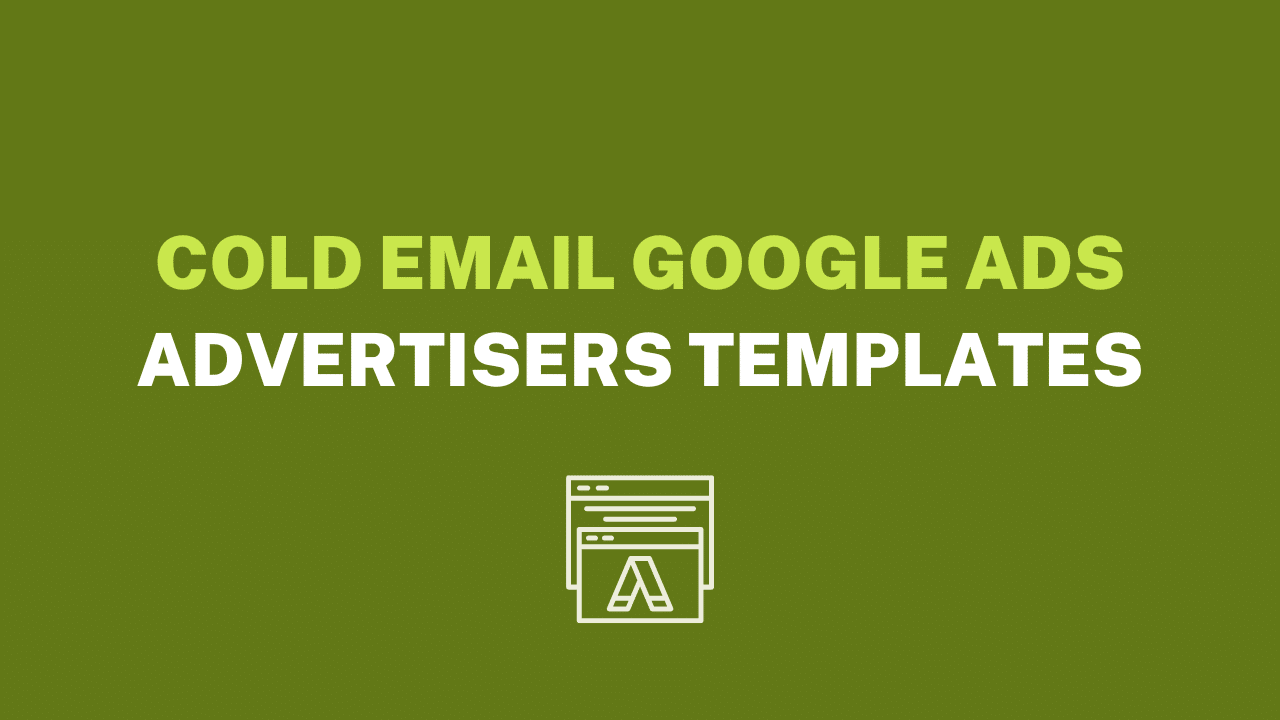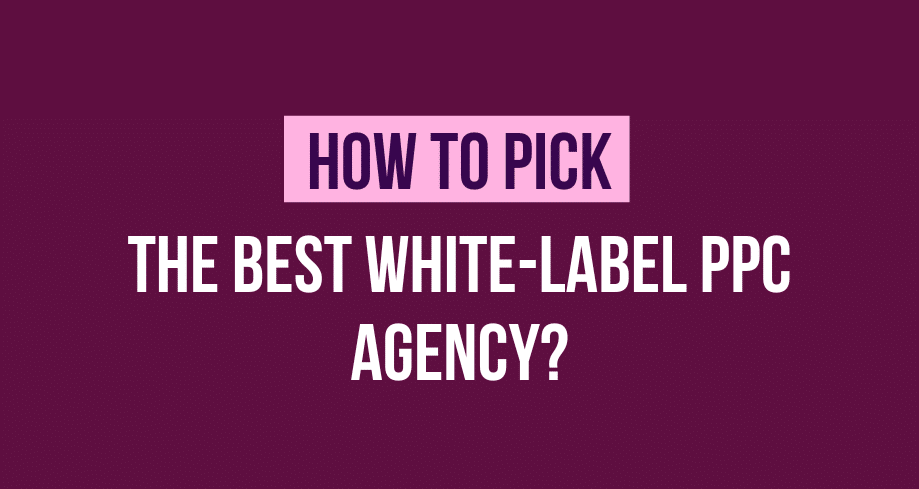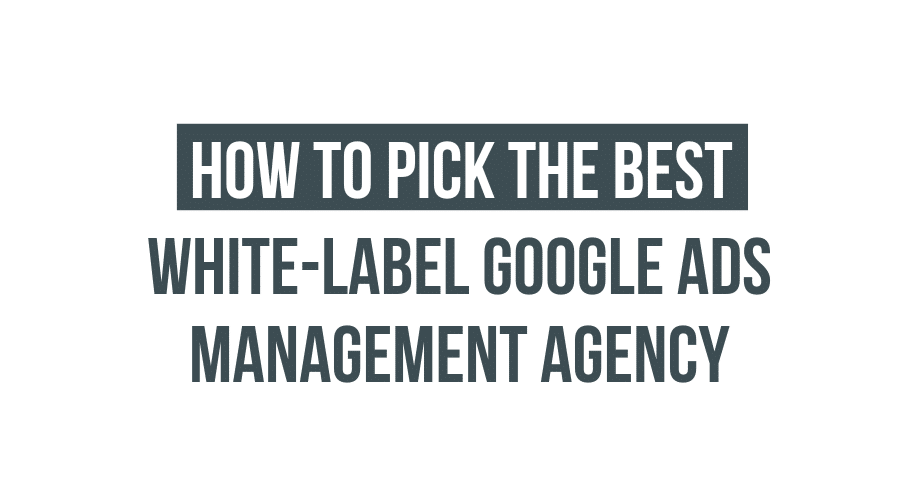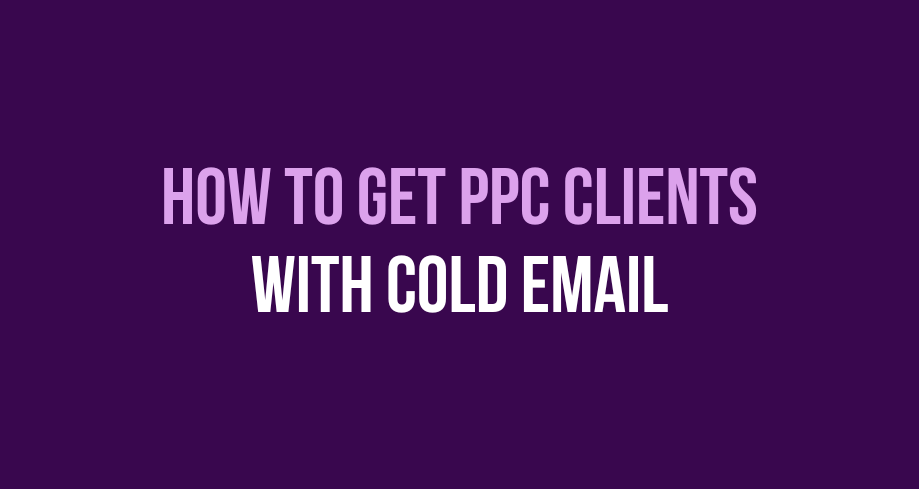Cold emailing is a powerful tool for reaching potential clients, but it can be challenging to master. For Google Ads advertisers, creating effective cold emails can make the difference between landing a new client or being ignored in a crowded inbox. The good news? Cold emailing can be a highly effective way to generate leads and grow your business with the right approach.
In this blog post, we’ll dive into the world of cold email strategy for Google Ads advertisers. We’ll discuss why using effective templates is crucial, explore the components of a successful cold email, and how you can set up a successful cold email campaign. So whether you’re an experienced marketer or only getting started with cold emails to get PPC clients, read on to learn how to create compelling cold email templates that will help you sparkle from the crowd and win new clients.
Understanding the target audience
Just like you could do with cold calling, our first step is to determine who our target audience is supposed to be.
Identification of target audience
Before you start crafting your cold email templates, it’s essential to identify your target audience. Who are the people you want to reach out to? What industries do they work in? What are their pain points, goals, and challenges?
You can create more personalized and effective email templates that speak directly to your target audience by answering these questions.
Importance of understanding the target audience
Understanding your target audience is critical because it allows you to tailor your message and approach to their needs and interests. Generating leads and converting them into clients is much easier when you can speak directly to their pain points and offer solutions that address their unique challenges.
Doing so increases the chances of your email being opened, read, and responded to.
How to research and understand the target audience
To research and understand your target audience, analyze your existing clients and identify their common characteristics. You can also use tools like Google Analytics and social media analytics to gather information about your target audience, including demographics, interests, and online behavior.
You can also conduct surveys or interviews with your target audience to gain deeper insights into their pain points and needs. Finally, you can look at your competitors’ websites and social media profiles to see how they are targeting the same audience and get inspiration for your own messaging.
By combining these methods, you can comprehensively understand your target audience and craft cold email templates that speak directly to them.
Components of a Cold Email
Here’s how you can compose the right kind of cold email template for Google Ads advertisers.
Subject lines
The subject line. It is the first thing your intended recipient will see, so making it compelling and attention-grabbing is crucial. Cold email subject lines should be concise, personalized, and relevant to the recipient’s needs or interests. Avoid using generic or spammy subject lines, as they may mark your email as spam. Plus, ensure your DMARC settings are configured correctly to enhance email security and deliverability.
Opening lines
The opening lines of your cold email should hook the recipient’s attention and entice them to read on. A strong opening line should be personalized, relevant, and compelling. It’s a good idea to reference something specific about the recipient, such as their company or recent activity, to show that you’ve researched and are genuinely interested in connecting with them.
Body of the email
The body of the email should provide more detail about your offer, product, or service. Keep it concise, clear, and focused on the recipient’s needs and interests. Use bullet points, short paragraphs, and headings to make the email easy to read and digest. Avoid making the email too salesy, as this can turn off the recipient and make them less likely to respond. This can help when you are thinking of sending a follow-up email.
Closing
The closing of your cold email should be polite and professional, with a clear call to action. Thank the email recipient for their time and consideration, and reiterate your offer or value proposition. It’s a good idea to include a sense of urgency or scarcity to encourage the recipient to take action.
Call-to-Action (CTA)
The call-to-action (CTA) is the most important part of your cold email. It should be clear, specific, and relevant to the recipient’s needs and interests. Avoid using generic CTAs like “contact us” or “learn more.”
Instead, use CTAs that are personalized and relevant, such as:
- “Schedule a call to discuss your specific needs.”
- “Download our free guide to improve your Google Ads campaigns.”
A good CTA isn’t just about the wording—it’s about accessibility. Along with a direct link, consider creating a QR code so recipients can take action with a quick scan, whether they’re on their phone or desktop. Make it easy for your audience to take action by providing clear instructions and contact information.
Best Practices for Writing Cold Emails
Personalization
Personalization is key to creating effective cold email templates. Take the time to research and understand your recipient’s needs and interests, and tailor your email accordingly. Use the recipient’s name, mention something specific about their company or recent activity, and highlight how your offer or solution can help them address their pain points or achieve their goals.
Keeping it concise
Keep your cold email concise and to the point. Use short paragraphs, bullet points, and headings to break up the text and make it easy to read. Avoid using jargon, technical language, or lengthy explanations. Instead, focus on communicating your value proposition or offer clearly and straightforwardly.
Focusing on benefits
Rather than focusing on features, focus on the benefits of your offer or solution. How will it help the recipient solve their problems or achieve their goals? Highlight your offer’s or solution’s benefits, and use examples or case studies to illustrate how it has helped others.
Proofreading and editing
Before sending your cold email, make sure to proofread and edit it carefully. Check for spelling mistakes and grammatical errors, and ensure that your email is free of typos or other mistakes. Use a tool like Grammarly or Hemingway to help you catch any errors or awkward phrasing.
A/B testing
A/B testing can help you improve the effectiveness of your cold email templates over time. Try testing different subject lines, opening lines, CTAs, or even entire email templates to see what resonates best with your target audience. Use an email marketing tool such as Constant Contact, Mailchimp or Omnisend to track your results and measure the effectiveness of your tests.
Cold email templates for Google Ads advertisers
Template 1: Introduction to the company
Subject Line: [Company Name] – Improving your Google Ads Campaigns
Hi [Recipient],
My name is [Your Name], and I am reaching out from [Your Company Name]. I came across your business online and was impressed with what you do.
I noticed that you are currently running Google Ads campaigns, and I am offering my assistance in improving your results.
At [Your Company Name], we specialize in helping businesses like yours get the most out of their Google Ads campaigns. Our team of experts can analyze your campaigns, identify areas for improvement, and implement effective strategies to help you achieve your goals.
Would you like to learn more about how we can help you improve your Google Ads campaigns? If so, I would love to schedule a call to discuss this further.
Best regards, [Your Name]
Template 2: Follow-up after a meeting
Subject Line: [Follow-up] – Improving Your Google Ads Campaigns
Hi [Recipient],
I hope this email finds you well. I am following up on our recent meeting to see if you had any further questions or concerns about improving your Google Ads campaigns.
At [Your Company Name], we are dedicated to helping businesses like yours get the most out of their Google Ads campaigns. We have a proven track record of success, and our team of experts can provide customized solutions to help you achieve your goals.
If you are still interested in learning more about our services, please let me know, and we can schedule a call to discuss further.
Best regards, [Your Name]
Template 3: Introduction with a pain point
Subject Line: Struggling with Google Ads? We Can Help
Hi [Recipient],
Are you itching to get the results you want from your Google Ads campaigns? You are not alone. Many businesses struggle to get the most out of their campaigns, but we are here to help.
At [Your Company Name], we specialize in helping businesses like yours overcome common pain points and achieve their goals with Google Ads. Our team of experts can provide customized solutions to help you improve your click-through rates, conversion rates, and overall ROI.
If you are interested in learning more about how we can help you, please let me know, and we can schedule a call to discuss this further.
Best regards, [Your Name]
Template 4: Requesting a referral
Subject Line: [Referral Request] – Improving Google Ads Campaigns
Hi [Recipient],
I hope this email finds you well. I wanted to ask if you know of other businesses struggling to get the most out of their Google Ads campaigns.
At [Your Company Name], we specialize in helping businesses like yours improve their click-through rates, conversion rates, and overall ROI with Google Ads. We have a proven track record of success, and our team of experts can provide customized solutions to meet each client’s unique needs.
If you know anyone that can benefit from our services, please refer them to us. We appreciate any help you can provide and are happy to offer referral incentives to show our appreciation.
Best regards, [Your Name]
Frequently Asked Questions
What is the ideal subject line length for a cold email template?
The ideal subject line length for a cold email template is between 6-10 words. This ensures that the subject line is concise and eye-catching while providing enough information to entice the recipient to open the email.
Can I use humor in my cold email templates for Google Ads advertisers?
You can use humor in your cold email templates, but they should be used cautiously. Humor can help to make your email more engaging and memorable, but it can also backfire if not executed correctly. It’s important to ensure that the humor is appropriate for your target audience and aligns with your brand’s tone and values.
How can I make my cold email template stand out from competitors?
To make your cold email template stand out from competitors, you can incorporate personalization, focus on benefits, and use attention-grabbing subject lines. You can also use a unique and visually appealing email design, and include social proof, such as testimonials or case studies, to establish credibility.
Should I include my company’s logo in the body of the email in my cold email template?
Including your company’s logo in the body of the email in your cold email template can help to establish brand recognition and increase credibility. However, it’s important to ensure that the logo is not too large or distracting and is placed in a visually appealing and relevant manner within the email.
What is the best way to track the success of my cold email campaigns using templates?
The best way to track the success of your cold email campaigns using templates is to use an email marketing software or cold email software that provides analytics and tracking features. These features can help you track open rates, click-through rates, and conversion rates and identify which templates and subject lines are most effective for your target audience.
Conclusion
Using effective cold email templates for Google Ads advertisers is a crucial aspect of any successful campaign. By understanding your target audience, following best practices for writing cold emails, and using the right templates, you can increase your chances of getting a response and achieving your business goals. Remember to personalize your emails, keep them concise, focus on benefits, and proofread and edit before sending. A/B testing is also essential to see what works best for your target audience. This approach can also be applied to cold sales emails.




